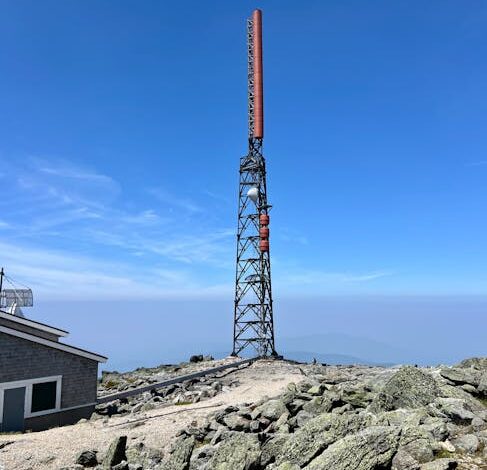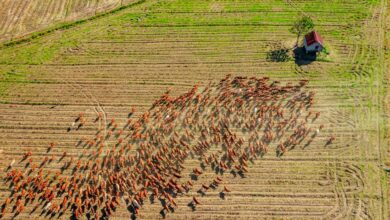When the Unthinkable Becomes Reality: A Climate Conundrum

There are some things we just come to expect from certain places. Palm trees in Florida, heavy snow in the mountains, scorching heat in the desert. We build our understanding of the world, and indeed our public health strategies, around these expectations. For years, the thought of a tropical, disease-carrying mosquito thriving in the cool, elevated climate of the Rocky Mountains would have been dismissed as highly improbable, even impossible.
That understanding, it turns out, needs a serious update. The Aedes aegypti mosquito, notorious globally for its role in transmitting devastating diseases like dengue, yellow fever, and Zika, has officially made a home in Western Colorado. This isn’t just a fleeting visit; it’s a thriving, established population. It’s a development that challenges our long-held assumptions about climate, geography, and the ever-shifting boundaries of our natural world.
For those of us who have followed public health trends or simply enjoy the peace of mind that comes from knowing certain threats are geographically confined, this news lands with a significant thud. How did a mosquito so reliant on hot, humid conditions manage to not just survive, but flourish, in a region known for its high altitudes and often arid environment? And more importantly, what does this mean for the health and safety of communities in the Mountain West?
When the Unthinkable Becomes Reality: A Climate Conundrum
Let’s talk about the Aedes aegypti for a moment. Historically, this particular mosquito has been a poster child for tropical and subtropical climates. Think Southeast Asia, parts of Africa, Latin America, and the Southern United States. It loves warmth, humidity, and is incredibly adaptable to urban environments, breeding in even the smallest pockets of standing water—a discarded tire, a forgotten planter, a pet’s water bowl. The conventional wisdom was clear: the higher elevations and cooler temperatures of the Rockies would simply be too harsh for its lifecycle.
And yet, here we are. Populations of Aedes aegypti are not just present, but demonstrably thriving in Western Colorado. This isn’t an isolated incident or a few strays carried in by travelers; it’s a localized establishment. This defies what we thought we knew about its environmental limitations. It prompts a critical re-evaluation of how we assess vector-borne disease risk in regions previously considered safe havens.
Unpacking the “Why” Behind the Spread
So, what’s going on? While specific, definitive answers are still being researched, a few key factors likely play a role. Climate change, of course, is the elephant in the room. Warmer average temperatures, extended warm seasons, and changes in precipitation patterns can create new pockets of suitable habitat where none existed before. Even subtle shifts can be enough for an opportunistic species like Aedes aegypti.
Furthermore, human activity cannot be overlooked. Increased global travel and trade mean more opportunities for invasive species to hitchhike to new locations. Once established, even small, localized microclimates within urban areas – places shielded from winds, retaining heat from pavement, or providing abundant artificial breeding sites – can offer the perfect incubator for a new population to take hold and expand.
The remarkable adaptability of this mosquito species also plays a significant part. It seems the Aedes aegypti is even more resilient and resourceful than we previously gave it credit for. It’s a stark reminder that nature is constantly evolving, and our understanding must evolve with it.
The Stakes Just Got Higher: Dengue, Zika, and Yellow Fever in the Rockies
The arrival of Aedes aegypti isn’t just an entomological curiosity. It carries a potent threat. This mosquito is a primary vector for some truly nasty diseases:
- Dengue Fever: Often called “breakbone fever” due to the severe muscle and joint pain it causes, dengue can range from mild to life-threatening. Severe dengue can lead to shock and internal bleeding. It’s endemic in over 100 countries, and the global incidence has increased dramatically in recent decades.
- Zika Virus: While often mild in adults, Zika gained global notoriety for its link to microcephaly and other severe birth defects when pregnant women are infected. It can also cause Guillain-Barré syndrome.
- Yellow Fever: A serious, acute viral hemorrhagic disease. While a highly effective vaccine exists, outbreaks can be devastating in unvaccinated populations.
For the Rocky Mountain region, this represents a completely new layer of public health concern. Historically, these diseases were “traveler’s diseases” – something you might pick up abroad. Now, with a local vector, the potential for local transmission becomes a very real and present danger. This shifts the focus from merely advising travelers to implementing widespread community surveillance and prevention strategies.
Challenges for Public Health and Local Communities
Local health departments in Western Colorado and neighboring areas now face an unprecedented challenge. They must rapidly adapt their strategies to include:
- Enhanced Surveillance: Monitoring mosquito populations and testing them for viruses is crucial to detect early transmission.
- Public Education: Communities need to understand the new risk, how these mosquitoes differ from native species, and crucially, how to prevent their breeding.
- Vector Control: Implementing effective mosquito control programs, which can include larvicides, adulticides, and community clean-up efforts to eliminate breeding sites.
- Healthcare Provider Awareness: Doctors and clinics need to be aware of the potential for locally acquired cases of dengue, Zika, or yellow fever, and know how to diagnose and report them.
This isn’t just a concern for healthcare officials; it’s a community-wide responsibility. Every resident has a role to play in limiting the spread of this invasive species and protecting their neighbors.
Taking Back Our Backyards: Practical Prevention in a New Era
The good news, if there is any, is that much of the prevention for Aedes aegypti is within our control, starting right in our own yards and neighborhoods. This mosquito is often called a “container breeder” because it lays its eggs in small, artificial containers of standing water.
Your Role in Mosquito Control
Here’s what you can do to make your property less inviting to these unwelcome guests:
- Dump and Drain: The golden rule. Regularly empty and scrub anything that holds water – bird baths, pet water dishes, flower pot saucers, buckets, and even children’s toys. Do this at least once a week.
- Clear Gutters: Clogged gutters can hold standing water for weeks, creating ideal breeding grounds. Keep them clean and free-flowing.
- Manage Tarps and Covers: If you have tarps covering woodpiles, boats, or other items, ensure they are taut so water doesn’t pool on them.
- Repair Leaks: Fix leaky outdoor faucets and irrigation systems that can create puddles.
- Screens and AC: Ensure window and door screens are in good repair to keep mosquitoes out of your home. Use air conditioning if available, as it also helps keep them out.
- Personal Protection: When outdoors, especially during dawn and dusk (though Aedes aegypti can bite during the day), use EPA-registered insect repellents. Wear long sleeves and pants if practical.
These actions, individually, might seem small. But collectively, they can make a massive difference in reducing mosquito populations and, by extension, the risk of disease transmission. It’s about changing habits and adopting a new vigilance for a new reality.
A Call for Vigilance and Adaptation
The spread of the Aedes aegypti mosquito into the Rocky Mountains is more than just a local news story; it’s a vivid illustration of how interconnected our world truly is, and how rapidly environmental and ecological boundaries are shifting. What was once considered a regional problem confined to tropical zones is now at our doorstep, demanding our attention and proactive measures.
This isn’t a time for panic, but for informed action and adaptation. It calls for communities, public health officials, and individuals to work together, leveraging scientific understanding and practical prevention strategies. By staying informed, taking simple yet effective steps, and supporting local health initiatives, we can collectively face this new challenge. The mountains may be majestic and timeless, but even they are not immune to change, and neither can our approach to public health be.





